New Mars Forums
You are not logged in.
- Topics: Active | Unanswered
Announcement
#1 2024-05-21 19:00:43
Star-Raker proposed SSTO from the ‘70’s.
In the discussion of the Radian Aerospace spaceplane, http://newmars.com/forums/viewtopic.php?id=10781, I suggested Radian investigate vertical takeoff instead of their horizontal takeoff method because vertical launch requires much lower wing weight. The key distinction is with vertical launch the wings only have to support the dry weight of the vehicle on return. But with horizontal launch the wings have to support the fully fueled weight of the vehicle.
But the Star-Raker proposal by Rockwell took this horizontal launch approach:
BLAST FROM THE PAST; a few good ideas may return to the light of day…
https://horizontalspace.wordpress.com/2 … ht-of-day/
As the designers noted horizontal launch has the advantage the vehicle could launch from any airport that has large enough runways to launch 747’s, rather than needing specialized launch pads and towers for vertical launch vehicles.
But the technique the Star-Raker used for the wings was innovative. They used multiple cylindrical tanks in the wings such that weight of the wings as tanks was close to that of normal cylindrical tanks. As a familiar example of heavy tank weight, recall the X-33. The non-cylindrical shape of the tanks resulted in poor weight efficiency.

Another innovation of the Star-Raker was the turbojet/ramjet engines. These are known as combined-cycle engines.

An operational example of such engines is the J-58 engines of the famous SR-71 Mach 3 jet. These are only able to get to Mach 3.2, however. Could the turbojet/ramjet of the Star-Raker get to the Mach 5+ required of their design?
Paging GW.
Bob Clark
Last edited by RGClark (2024-05-21 23:36:28)
Old Space rule of acquisition (with a nod to Star Trek - the Next Generation):
“Anything worth doing is worth doing for a billion dollars.”
Offline
Like button can go here
#2 2024-05-21 19:21:26
- tahanson43206
- Moderator
- Registered: 2018-04-27
- Posts: 23,593
Re: Star-Raker proposed SSTO from the ‘70’s.
For RGClark re nice addition to the new Single Stage to Orbit forum ....
This post is reserved for an index to posts that may be contributed by NewMars members over time.
(th)
Offline
Like button can go here
#3 2024-05-21 19:32:50
- tahanson43206
- Moderator
- Registered: 2018-04-27
- Posts: 23,593
Re: Star-Raker proposed SSTO from the ‘70’s.
For RGClark ... Your description of the 1970's era vision of an SSTO that flew from any airport inspired this thought ....
There is a hybrid concept that I have never seen offered....
It seems to me that it is not possible to call a rocket that is carried by an airplane an SSTO, so this post does not really belong in this topic. However, I'll slip it in because it flows from your post....
I'm picking up on the observation that a horizontal take off has some advantages over a fixed vertical launch tower.
None of the aircraft launching systems I've seen to date have offered what I will describe ... Every one of them (that I have seen) drops the rocket from under the aircraft, after spending an extended period of time climbing to an altitude above the Earth, and the rocket has to free fall for a while before lighting up for flight to orbit.
An alternative is to carry the piggyback rocket to a vertical position so the piggyback rocket is aiming up when it starts it's engines and pulls away from the carrier aircraft, which then returns to it's airfield.
This strategy would allow any (sufficiently large) airfield to support spaceflight, including passenger processing which traditional airfields are well able to do.
The carrier aircraft need not be powered by traditional jet engines. It's engines could all be rockets, so that it accelerates rapidly and assumes vertical attitude rapidly, before releasing it's client and returning to base.
(th)
Last edited by tahanson43206 (2024-05-21 19:33:33)
Offline
Like button can go here
#4 2024-05-21 21:36:04
- kbd512
- Administrator
- Registered: 2015-01-02
- Posts: 8,366
Re: Star-Raker proposed SSTO from the ‘70’s.
tahanson43206,
The American 747 piggyback SSTO concept of what you described:
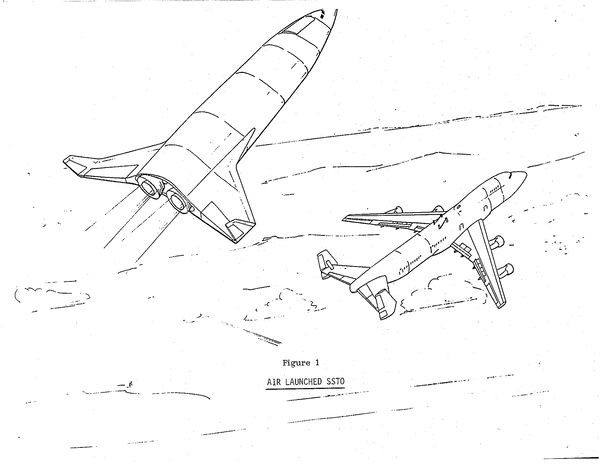
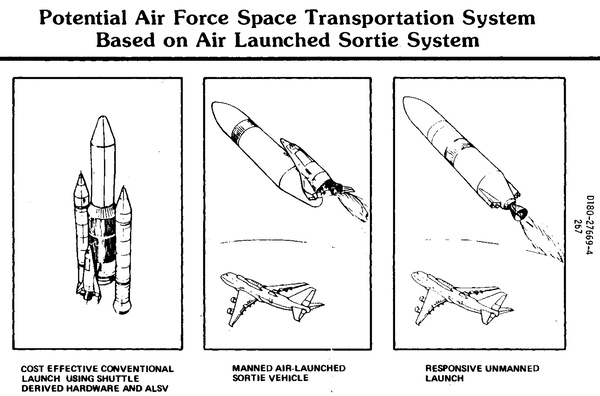
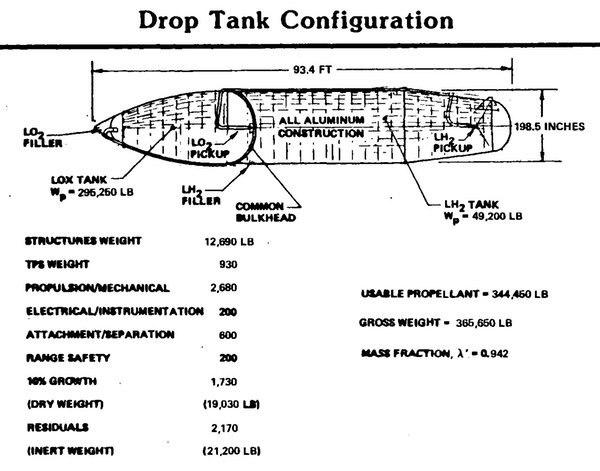
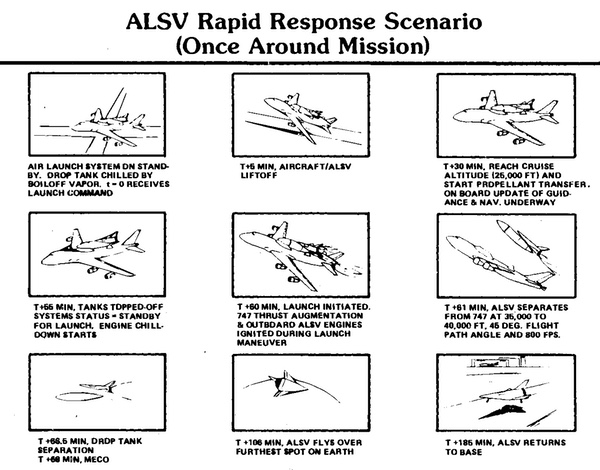
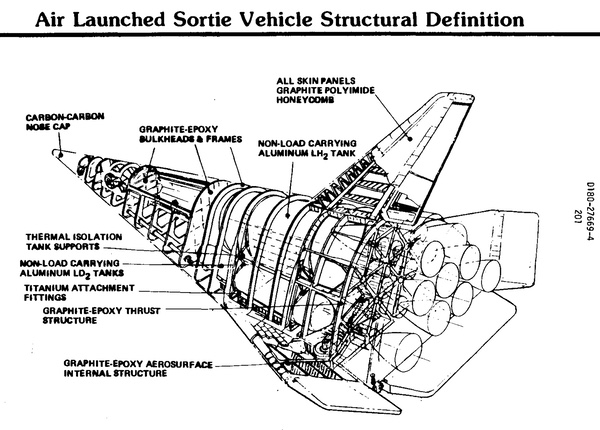
The Soviet AN-225 air-launched "MAKS" (Russian acronym) piggyback SSTO concept you described:
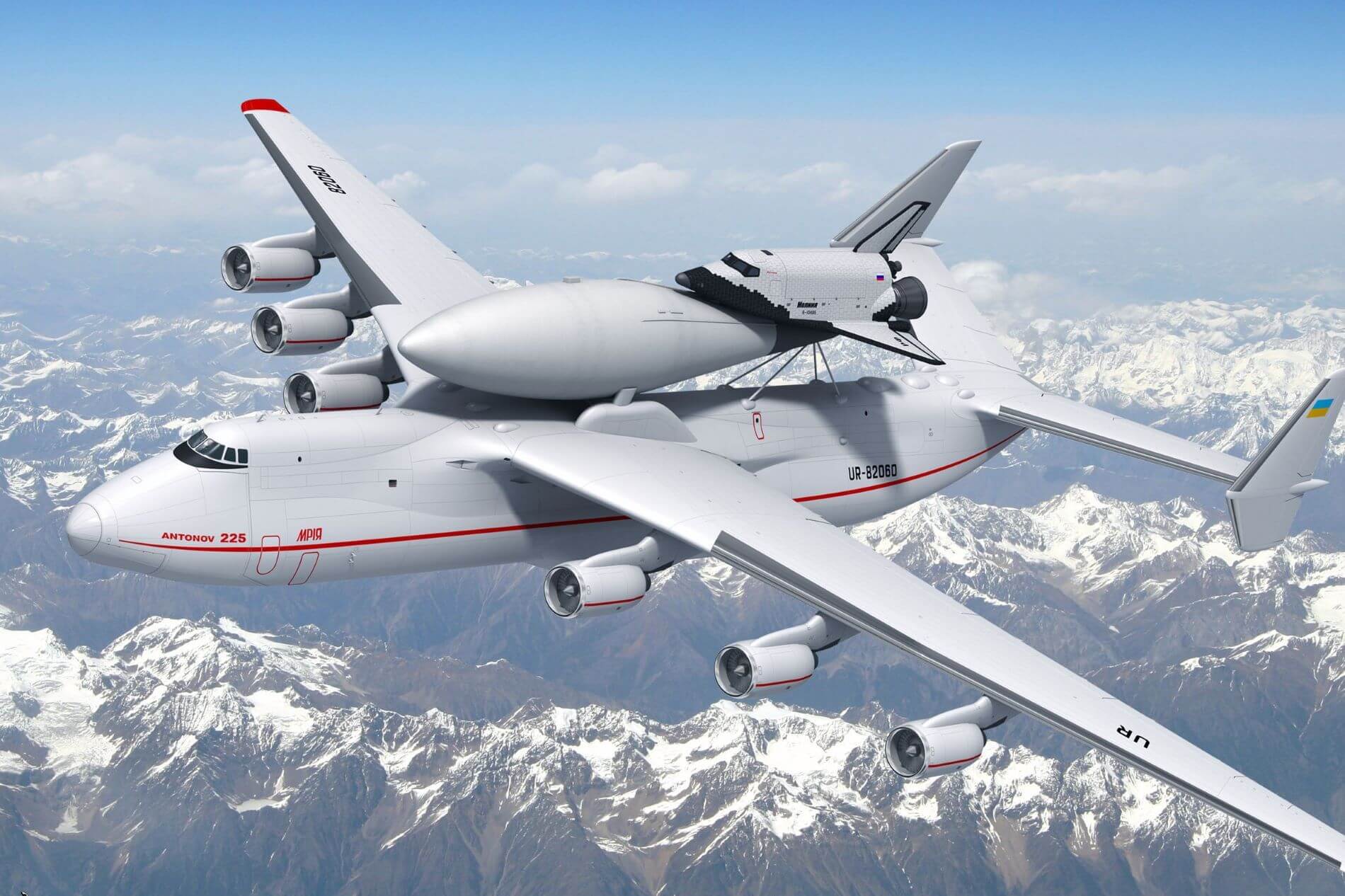
Soviet "AKS" air-launched underslung "OOS" (Russian acronym) SSTO:


1,650t is a very large air-launch vehicle. Nobody could ever accuse the Russians of not "dreaming big".
I consider these air-launched SSTOs, because there are no rocket staging events. Dropping a SSTO from a jet aircraft to carry it above most of the atmosphere is a perfectly valid way to give every advantage to the orbital vehicle, even if it doesn't result in a large delta-V gain by doing so. It increases Isp after nozzle optimization for air launch and decreases maximum dynamic pressure since the vehicle will be much higher in altitude when it arrives at Max-Q.
Offline
Like button can go here
#5 2024-05-22 00:25:16
- kbd512
- Administrator
- Registered: 2015-01-02
- Posts: 8,366
Re: Star-Raker proposed SSTO from the ‘70’s.
I discovered through searching that the Rockwell 1978 SSTO study for NASA was nicknamed the "Platypus" design, but appears in USAF documentation as the Reusable Space Transport:
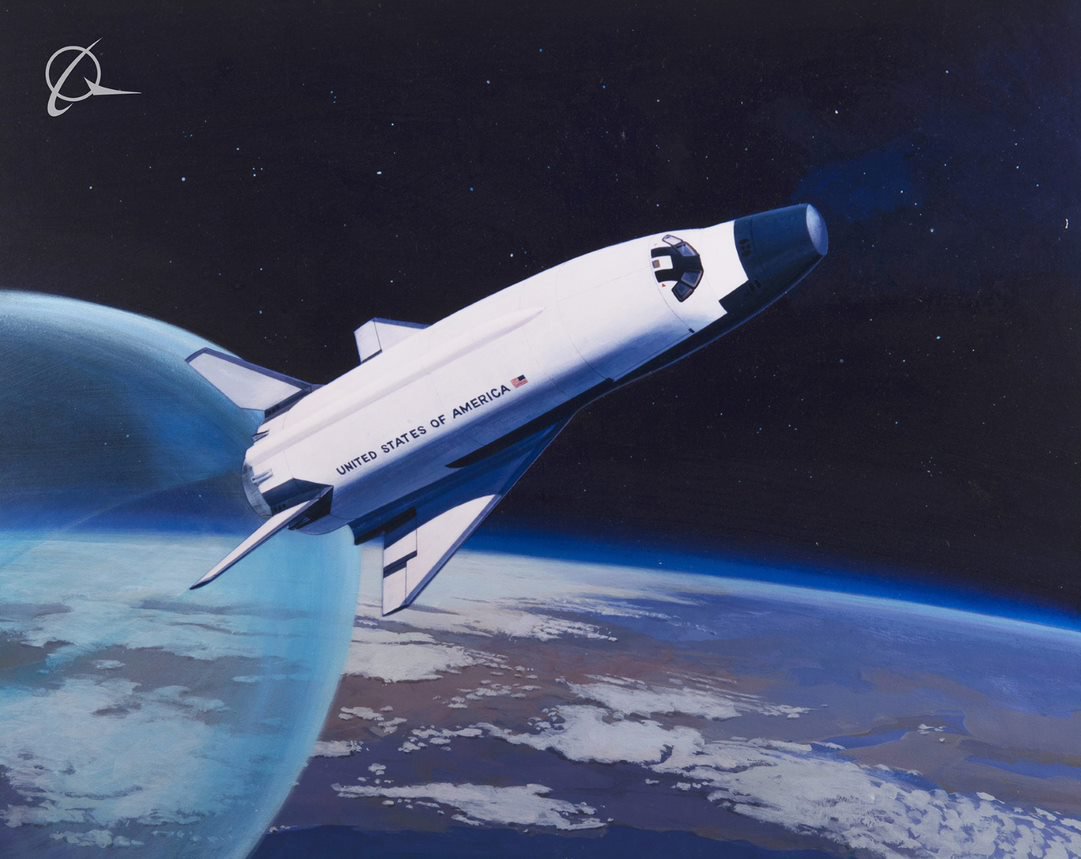
This LOX/LH2 powered design is what I would like to use as our baseline, because it has the payload performance we're after.
Empty Mass: 96,650 kg (213,070 lb)
Wet Mass: 1,158,192 kg (2,553,376 lb)
Thrust (vac): 18,643.471 kN (4,191,219 lbf)
Isp (sl): 385s
Isp (vac): 467s
Burn Time: 500s
Height: 64.00 m (209.00 ft)
Length: 53.50 m (175.50 ft)
Diameter: ?
Wingspan: 34.30 m (112.50 ft)
Engines: 5 SSME Plus
Oxidizer: LOX
Fuel: LH2
Thrust (sl): 3,073.900 kN (691,040 lbf)
Thrust (vac): 3,728.70 kN (838,245 lbf)
Engine Weight: 2,973 kg (6,554 lb)
Thrust to Weight Ratio: 127.89
Area Ratio: 55
Offline
Like button can go here
#6 2024-05-22 11:23:04
Re: Star-Raker proposed SSTO from the ‘70’s.
I discovered through searching that the Rockwell 1978 SSTO study for NASA was nicknamed the "Platypus" design, but appears in USAF documentation as the Reusable Space Transport:
https://www.cizadlo.us/AmericanRocketNe … atypus.jpg
This LOX/LH2 powered design is what I would like to use as our baseline, because it has the payload performance we're after.
Empty Mass: 96,650 kg (213,070 lb)
Wet Mass: 1,158,192 kg (2,553,376 lb)
Thrust (vac): 18,643.471 kN (4,191,219 lbf)
Isp (sl): 385s
Isp (vac): 467s
Burn Time: 500s
Height: 64.00 m (209.00 ft)
Length: 53.50 m (175.50 ft)
Diameter: ?
Wingspan: 34.30 m (112.50 ft)Engines: 5 SSME Plus
Oxidizer: LOX
Fuel: LH2
Thrust (sl): 3,073.900 kN (691,040 lbf)
Thrust (vac): 3,728.70 kN (838,245 lbf)
Engine Weight: 2,973 kg (6,554 lb)
Thrust to Weight Ratio: 127.89
Area Ratio: 55
Thanks. That is quite an upgrade in the SSME thrust though. For instance the current SSME only has a thrust to weight ratio of about 70 to 1.
Also, what is payload of the vehicle?
Bob Clark
Old Space rule of acquisition (with a nod to Star Trek - the Next Generation):
“Anything worth doing is worth doing for a billion dollars.”
Offline
Like button can go here
#7 2024-05-22 12:16:34
- tahanson43206
- Moderator
- Registered: 2018-04-27
- Posts: 23,593
Re: Star-Raker proposed SSTO from the ‘70’s.
For RGClark... re payload question in Post #6
I liked your question and attempted to find the post where kbd512 defined 500 passengers as his payload...
The first search revealed only topics, but that may be enough information so that a follow up search by message would reveal the answer:
Index» Search» Topics with posts containing '500 and passenger*', by kbd512
Pages: 1
Search results
Topic Forum Replies Last post
New high strength alloys for SSTO’s? by RGClark
Single Stage To Orbit 8 2024-05-20 21:55:38 by kbd512
SSTO - Mathematical Analysis Gravity vs Stages by tahanson43206
Single Stage To Orbit 22 2024-05-15 17:27:44 by RGClark
Pages: 1
Index» Search» Topics with posts containing '500 and passenger*', by kbd512
(th)
Offline
Like button can go here
#8 2024-05-22 13:27:30
- kbd512
- Administrator
- Registered: 2015-01-02
- Posts: 8,366
Re: Star-Raker proposed SSTO from the ‘70’s.
Dr Clark,
Payload to LEO for the Rockwell "Platypus" SSTO submitted to NASA for the 1978 NASA / USAF SSTO design studies, is 45t / 45,000kg.
They were very optimistic about the thrust-to-weight achievable using LOX/LH2 engines at that time. I could see a modern LH2 design achieving 100:1. Meanwhile, LOX/LCH4 is 150:1 (Raptor 3) and LOX/RP1 is 200:1 (Merlin-1D) for the best American engine designs. I've never seen higher ratios achieved by other countries, but I don't claim to know about all foreign engine projects ever undertaken. American LCH4 and RP1 engines have achieved the highest thrust-to-weight ratios that I'm aware of, for all rocket engines presently in use, by a good wide margin. From a historical standpoint, the LOX/RP1 NK-33 is the closest, performance-wise, but falls short of Raptor 2 and far short of the Merlin-1D. The Merlin and Raptor engine designs are presently flown aboard operational orbital launch vehicles. RD-180 incorporates NK-33 technology, IIRC.
Offline
Like button can go here
#9 2025-07-05 06:53:52
- tahanson43206
- Moderator
- Registered: 2018-04-27
- Posts: 23,593
Re: Star-Raker proposed SSTO from the ‘70’s.
For all...
GW's work posted in the exrocketman.blogspot.com site is now available by a single click.
https://exrocketman.blogspot.com/search?q=ssto
The paper is detailed, with plenty of graphs to illustrate the text.
I am guessing here, but it is possible that anyone offering an opinion without reading the paper is indeed likely to be missing something important.
(th)
Offline
Like button can go here